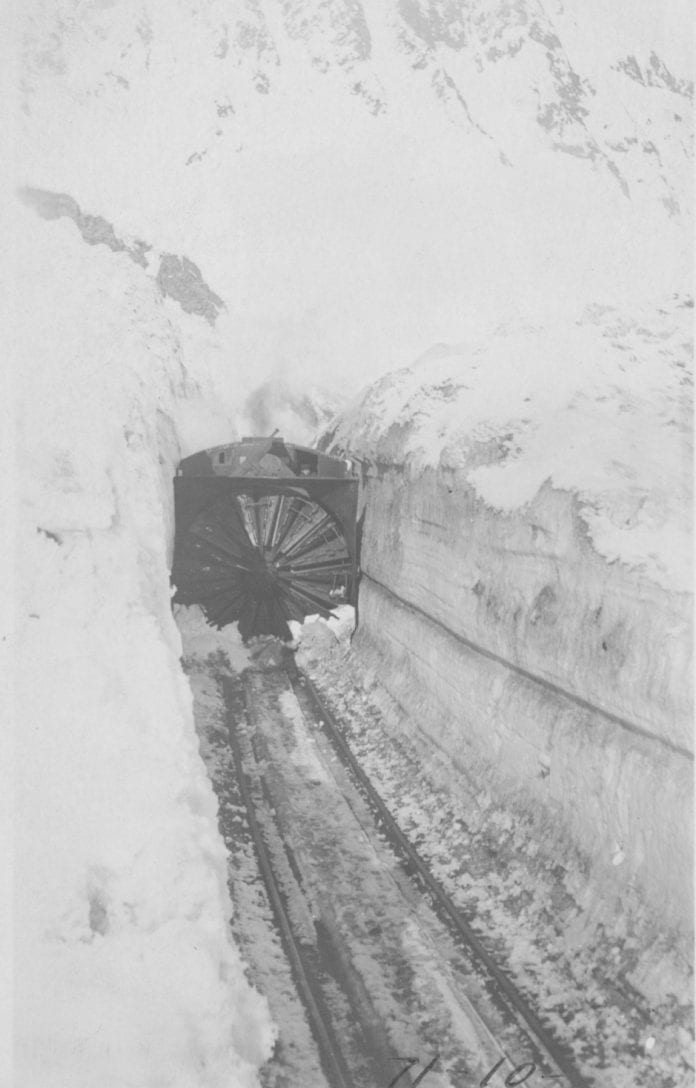Cutting a swath through a winter’s deposit of snow is one of the four rotary snowplows that earned their keep for the Copper River and Northwestern Railway. The smallest rotary had a cut of 10 feet, seven inches and the largest made a path of 12 feet, six inches.
Shortly before the railroad was completed in March of 1911, a blizzard piled wet, heavy snow on top of the winter’s accumulation of light, powdery snow, creating avalanche conditions. For miles, the track disappeared under huge piles of snow, some up to 49 feet deep. Where the large drifts were deeper than the trains, men would create benches of snow and shovel it down so the rotary could handle it.
Designed by Bill Simpson, the rotary early on required two engines and a string of coal cars to move it as it had no power of its own for locomotion, only for snowplowing. The train would push it, the engineer relying on signals from the rotary pilot. The story goes that when doing this nerve-wracking winter work, Rotary Bill would chew through the stem of the pipe clenched in his teeth, in less than a month!
This memory is brought to you courtesy of the collection from the Cordova Historical Society held in the Museum.














